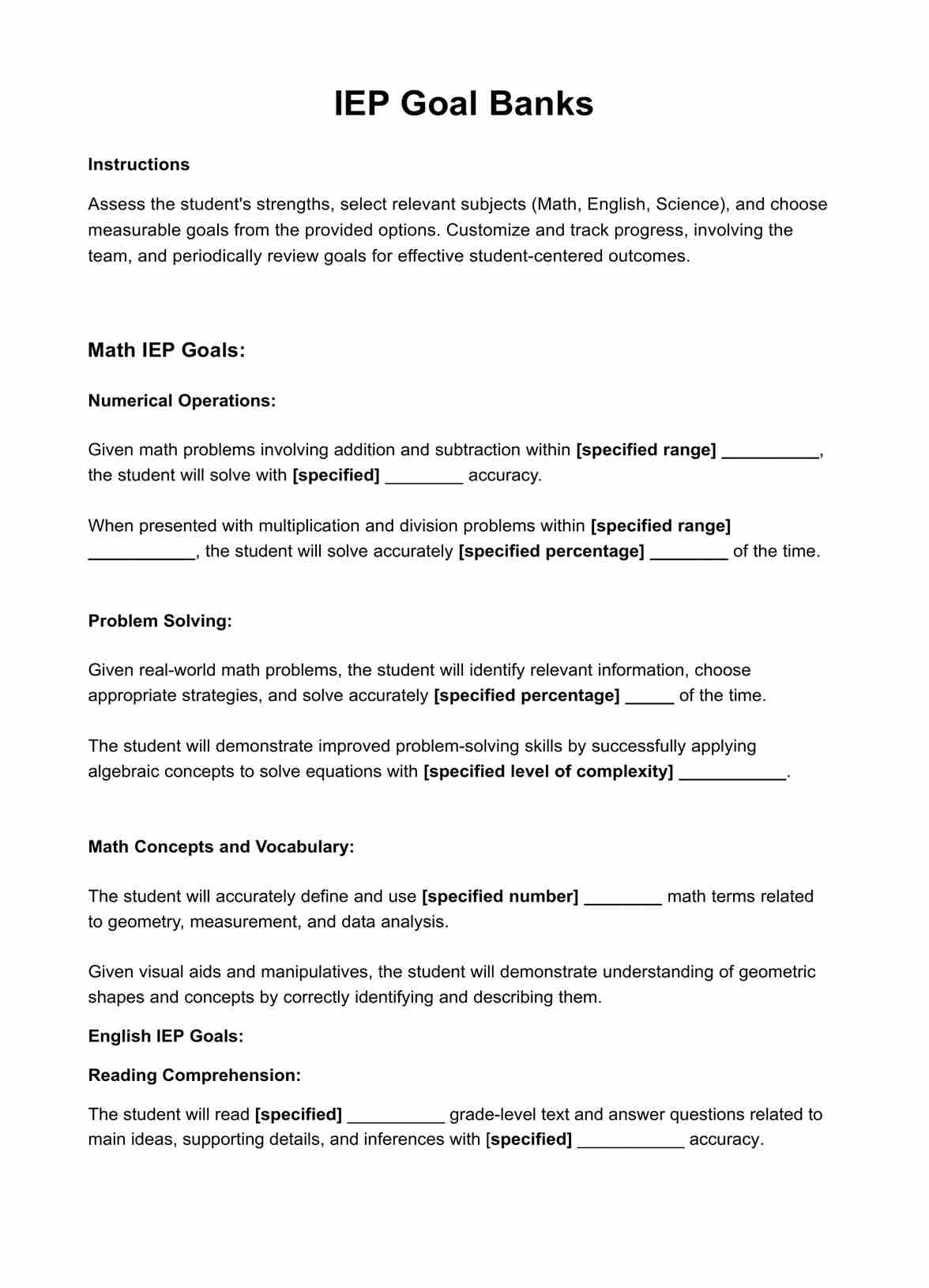IEP Goal Banks are utilized by educators, special education professionals, therapists, and administrators involved in developing Individualized Education Programs (IEPs) for students with disabilities.

IEP Goal Bank
Access our comprehensive IEP Goal Bank; download a free PDF for personalized goal-setting and enhanced student progress.
Use Template
IEP Goal Bank Template
Commonly asked questions
It is mostly used when developing, reviewing, and updating Individualized Education Programs (IEPs) for students with disabilities.
Professionals choose relevant goals from the bank, customize them, incorporate them into the IEP, monitor progress, collaborate with the team, and evaluate effectiveness, streamlining the process and ensuring personalized educational plans.
EHR and practice management software
Get started for free
*No credit card required
Free
$0/usd
Unlimited clients
Telehealth
1GB of storage
Client portal text
Automated billing and online payments











